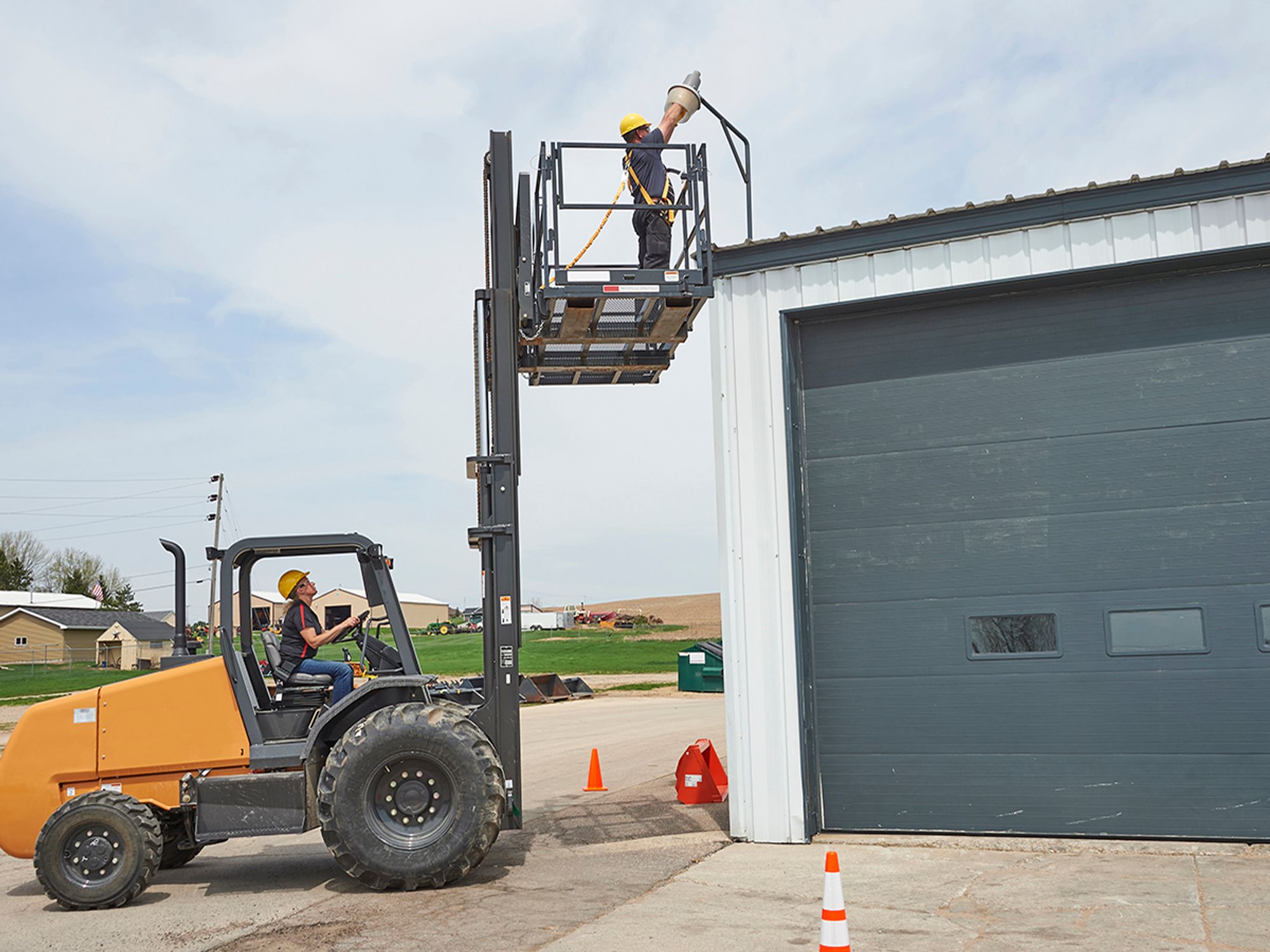InstituteSafety & HealthGeneral Industry SafetyHeavy Equipment and VehiclesUSAEnglishHeavy Equipment and VehiclesAnalysisFocus AreaIn Depth (Level 3)
Powered industrial trucks in Construction
['Heavy Equipment and Vehicles']

Powered industrial trucks (PITs), also known as forklifts or lift trucks, are essential for most construction activities. Used to efficiently maneuver heavy and awkward materials, PITs can also present hazards to operators and other employees.
Construction site PIT safety requires:
- Continual evaluation of the workplace. Additional moving equipment, pedestrian employees, weather, and properly handling of loads present continual hazards for PIT operators and require continual risk assessment.
- Establishing and communicating rules and procedures for the safe operations of all PITs.
- Obtaining manufacturer’s prior written approval before making modifications that would impact safety and capacity, such as adding a man basket.
- Observing capacity ratings. The PIT’s nameplate contains important regarding load and lifting capacity. These capacities must never be exceeded.
- Operator training. All PIT operators must undergo a rigorous training that includes a combination of formal instruction (e.g., lecture, discussion, interactive computer learning, video tape, written material), practical training (demonstrations performed by the trainer and practical exercises performed by the trainee), and evaluation of the operator’s performance in the workplace. See 1910.178(l) for the full training requirements, which, among other things, include a specific list of topics, some of which may be truck- and workplace specific.
- Re-evaluation of PIT operators at least once every three years. Refresher training should also be provided any time operators are observed driving unsafely, involved in an incident or near miss, or are assigned a different type of equipment.
- Ensuring equipment is inspected at least daily and maintained properly. Where industrial trucks are used on a round-the-clock basis, PITs must be examined after each shift. Unsafe equipment must be removed from service until repaired.
- Permitting operators to operate only correctly-classified equipment in hazardous atmospheres. Refer to 1910.178 Table N-1 for PIT classifications.
- Providing designated areas for battery charging/changing operations. These areas should also have appropriate emergency equipment (first aid kit, eyewash station, etc.).
Effective training for PIT operators includes:
- Truck-related topics:
- Training requirements and operational expectations
- Operational control
- Warnings and precautions
- Steering, maneuvering, and visibility
- Fork and attachment adaptation, operation, and use limitations
- Refueling and/or charging and recharging of batteries
- Inspection and maintenance requirements. Refueling and/or charging and Operating limitations.
- Facility or site-specific hazards:
- Pedestrians
- Obstacles, ramps/slopes, and surface conditions
- Load manipulation, stacking, and unstacking
- Hazardous or classified locations and materials
- Operational hazards:
- Closed environments and other areas where insufficient ventilation or poor vehicle maintenance could cause a buildup of carbon monoxide or diesel exhaust.
- Center of gravity — The point on an object at which all of the object’s weight is concentrated. For symmetrical loads, the center of gravity is at the middle of the load.
- Counterweight — The weight that is built into the truck’s basic structure and is used to offset the load’s weight and to maximize the vehicle’s resistance to tipping over.
- Load center — The horizontal distance from the load’s edge (or the fork’s or other attachment’s vertical face) to the line of action through the load’s center of gravity.
- Terrain grades— The slope of a surface (measured in percent as the number of feet of rise or fall over a hundred foot horizontal distance) and how to operate on various grades.
- Stability triangle — Employees must understand that PITs operate differently than vehicles. The 3-point suspension system that runs along an imaginary line between a forklift’s two front tires and the center of the rear axle. Though having four wheels, PITs are only supported at these three points making maneuverability more touchy than normal vehicles.
